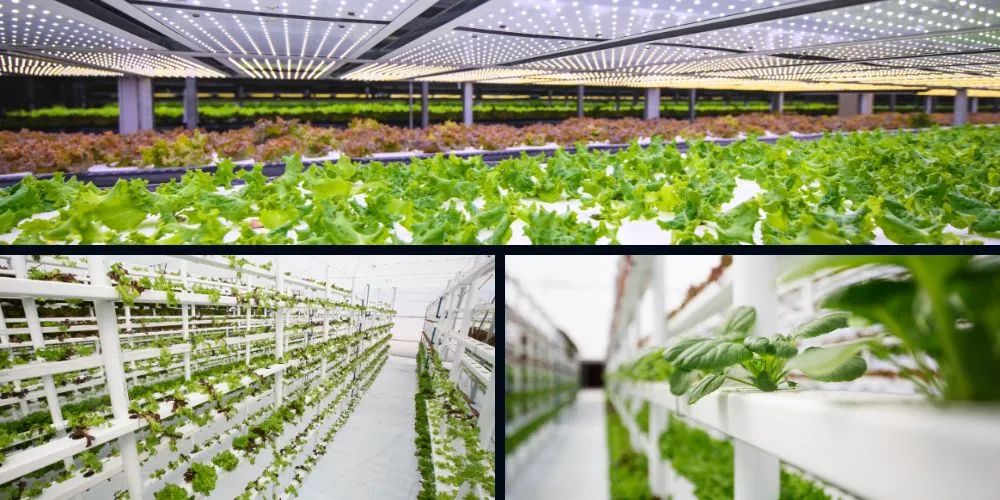Vertical farming has emerged as a groundbreaking solution in the quest for sustainable and efficient food production, revolutionizing traditional agriculture practices. By harnessing innovative technologies and design principles, it offers the promise of year-round crop cultivation in controlled indoor environments, irrespective of geographic constraints. In this article, we delve into the world of vertical farming, uncovering its principles, advancements, and the transformative potential it holds for the future of agriculture.
Understanding Vertical Farming
Vertical farming involves growing crops in vertically stacked layers or vertically inclined surfaces, typically within controlled indoor environments such as warehouses, skyscrapers, or shipping containers. Unlike conventional farming, which relies on expansive land, favorable weather conditions, and large-scale water usage, vertical farming maximizes space utilization, minimizes resource consumption, and enhances crop yields through precise environmental control.
Controlled Environment Agriculture (CEA)
At the heart of vertical farming lies the concept of Controlled Environment Agriculture (CEA), which involves manipulating environmental factors such as light, temperature, humidity, and nutrient levels to optimize plant growth and productivity. CEA systems utilize advanced technologies, including LED lighting, hydroponics, aeroponics, and aquaponics, to create ideal growing conditions tailored to the specific needs of different crops.
Vertical Farming Systems
Its systems vary in design and scale, ranging from small-scale urban gardens to large-scale commercial operations. Common vertical farming configurations include vertical towers, shelves, racks, and modular units, each optimized for efficient space utilization and ease of cultivation. These systems can be customized to accommodate various crops, from leafy greens and herbs to vine crops and even fruit-bearing plants.
Advancements in Vertical Farming Technology
Recent years have witnessed significant advancements in vertical farming technology, driving the expansion and adoption of this innovative agricultural practice:
LED Lighting Systems
LED lighting plays a critical role in vertical farming by providing the necessary spectrum of light for photosynthesis while minimizing energy consumption and heat generation. Advancements in LED technology have led to the development of customizable lighting systems that can simulate natural sunlight, optimize plant growth cycles, and enhance crop quality and nutritional content.
Hydroponic and Aeroponic Systems
Hydroponic and aeroponic systems are widely employed in vertical farming to deliver nutrients directly to plant roots without needing soil. These soilless cultivation techniques maximize water efficiency, minimize nutrient wastage, and reduce the risk of soil-borne diseases, enabling year-round production of high-quality crops in controlled environments.
Automation and Robotics
Automation and robotics are crucial in streamlining operations and maximizing facility efficiency. Automated systems for planting, harvesting, watering, and monitoring plant health minimize labor requirements, optimize resource utilization, and ensure consistent crop yields, ultimately reducing production costs and increasing profitability.
Potential Benefits of Vertical Farming
Vertical farming offers a multitude of potential benefits that extend beyond traditional agriculture practices:
Sustainable Resource Management
Vertical farming promotes sustainable resource management by minimizing land use, conserving water, and reducing the carbon footprint associated with food production and transportation. Producing food locally and year-round reduces dependency on long-distance food supply chains and mitigates the environmental impact of conventional agriculture.
Urban Food Security
It can enhance urban food security by directly providing fresh, nutritious produce to densely populated urban centers. By utilizing vacant or underutilized spaces within urban environments, vertical farms can increase access to healthy food options, address food deserts, and promote community resilience in the face of climate change and disruptions to global food supply chains.
Economic Opportunities
It presents economic opportunities for entrepreneurs, investors, and local communities through job creation, innovation, and economic development. By fostering the growth of a diverse range of crops in controlled environments, it can stimulate local economies, support small-scale farmers, and catalyze the growth of urban agriculture hubs.
Challenges and Future Directions
Despite its promise, vertical farming faces several challenges and opportunities for further development:
Energy Efficiency and Cost-effectiveness
Energy consumption and operating costs remain significant challenges for vertical farming, particularly in large-scale commercial operations. Innovations in energy-efficient lighting, heating, ventilation, and cooling systems are needed to improve operations’ sustainability and cost-effectiveness.
Crop Diversity and Nutritional Quality
Expanding the range of crops grown in systems and enhancing their nutritional quality pose ongoing challenges for researchers and cultivators. Continued research into crop breeding, genetic engineering, and nutrient supplementation is needed to optimize crop yields, flavor profiles, and nutritional content in environments.
Regulatory and Policy Considerations
Regulatory frameworks and zoning ordinances may present barriers to the widespread adoption of vertical farming, particularly in urban areas. Policymakers must develop supportive regulations and incentives to encourage investment in infrastructure, promote food safety and quality standards, and facilitate the integration of vertical farming into urban planning initiatives.
Conclusion
Vertical farming represents a paradigm shift in agriculture, offering a sustainable, efficient, and innovative approach to food production in the face of global challenges such as climate change, population growth, and urbanization. Ongoing technological advancements, research, and policy support can transform how we grow, distribute, and consume food, paving the way for a healthier, more resilient, and food-secure future for future generations. As we cultivate the future of agriculture through vertical farming, the journey toward sustainable food systems shines brightly, guided by the promise of innovation, collaboration, and environmental stewardship.










